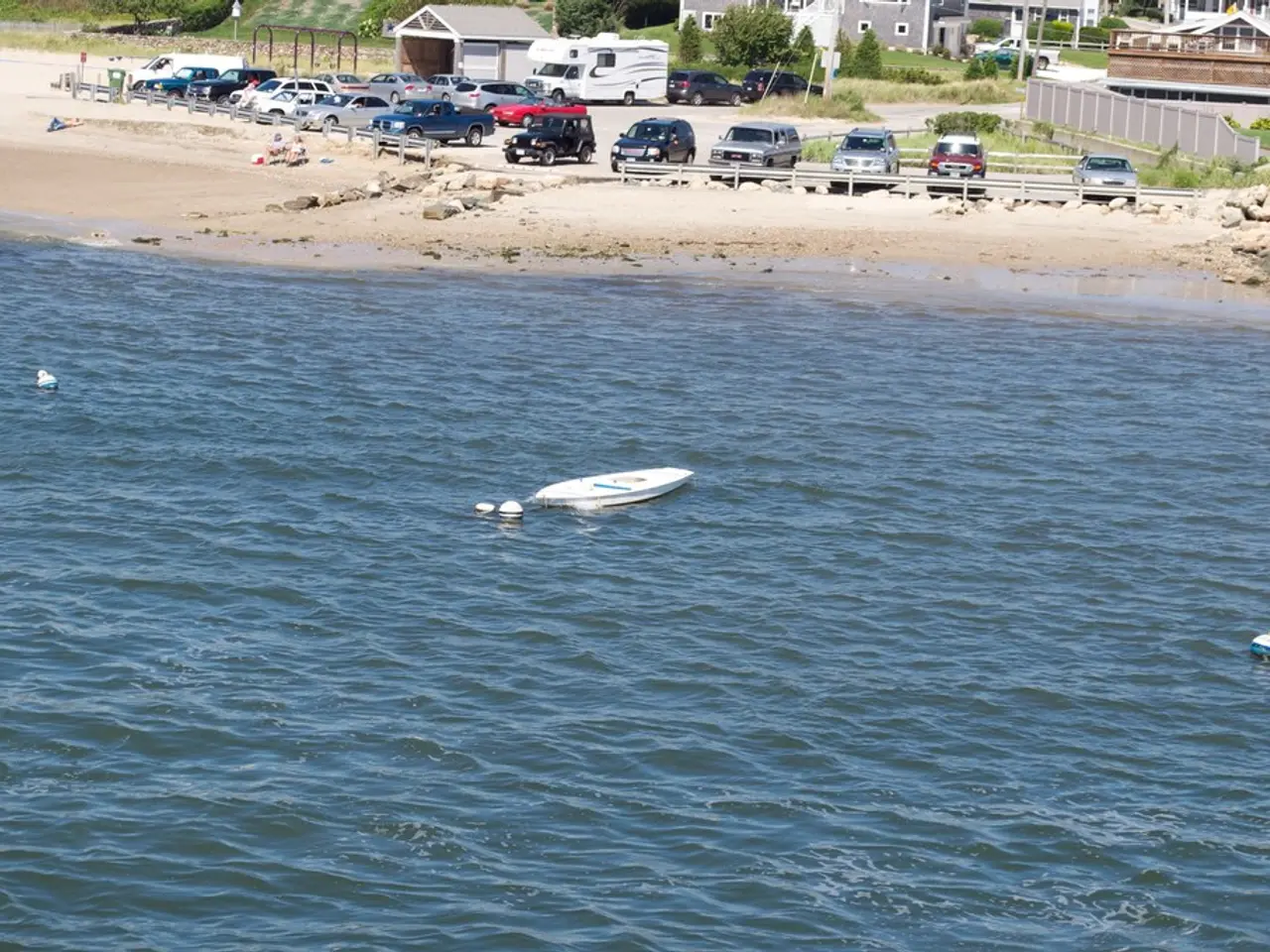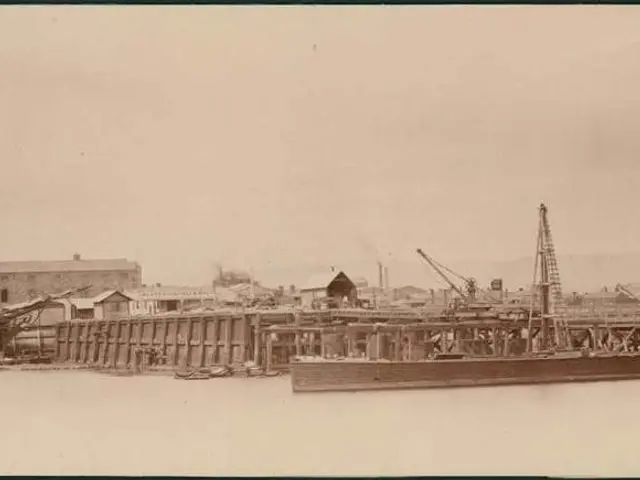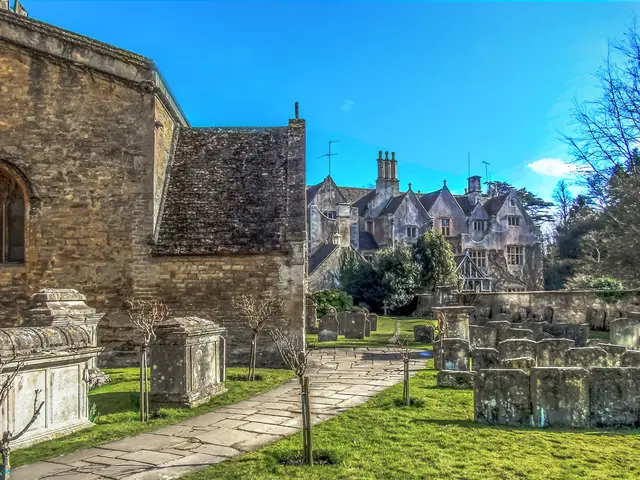Portuguese Hydrographic Institute: Six Decades of Ocean Understanding Loom over Future Exploration
The year 2021 marks a significant milestone for the Portuguese Hydrographic Institute (IH). It is not only the first year of the United Nations Decade of Ocean Science for Sustainable Development but also the centennial anniversary of the International Hydrographic Organization. Moreover, it signifies a decade until the completion of the Portuguese SEAMAP 2030 program, aligned with the Nippon Foundation-GEBCO SEABED 2030 project.
The IH's focus lies primarily in the Ocean Mapping theme, encompassing the mapping of the seabed and sub-seabed, with two ongoing programs: SEAMAP 2030 and SEDMAR. The Institute's activities are also divided into three main themes: Ocean Mapping, Observation, and Forecasting.
However, the IH faces several challenges and opportunities in ocean science. One of the key challenges includes addressing climate change impacts, such as sea-level rise, coastal erosion, and increased storm surge risks affecting Portugal’s coastal zones and marine infrastructure. To combat these effects, enhanced ocean observation and forecasting capabilities are essential to support national adaptation and resilience strategies.
Another challenge involves developing capabilities for enhanced seabed security and critical underwater infrastructure protection. This requires multi-sector collaboration among defense, industry, and academia to address emerging threats in the maritime domain.
Integrating multidisciplinary data and innovative technologies into ocean mapping and observation systems is another hurdle. This reflects broader ecosystem and climate change challenges, including ocean acidification, hypoxia, microplastics, and invasive species.
Despite these challenges, the IH sees numerous opportunities. Hosting and participating in key scientific events and collaborations, such as the 11th Atlantic Iberian Margin Symposium (MIA) in 2025, fosters exchange of advanced scientific methods and oceanographic findings regionally, strengthening knowledge and capacity building.
Contributing to ecosystem restoration projects, like oyster reef restoration under the Mar2030 program, illustrates IH’s role in sustainable marine resource management and coastal ecosystem resilience aligned with SDG goals.
Leveraging strategic alignment with European and national policies, such as Portugal’s National Strategy for the Sea and innovation-focused blue economy programs, facilitates research funding and technology development supporting ocean science missions.
Advancing ocean observation and forecasting tools to support climate adaptation and marine spatial planning aids Portugal’s commitments to international climate and ocean governance frameworks, including the UN 2030 Agenda and the Decade of Ocean Science.
The IH operational center named CGEOMETOC is boosting the setup of the NATO Maritime GEOMETOC Center of Excellence, MGEOMETOC, to be co-located in IH. The Institute is also integrating its observation systems in European and global observation networks, as well as in networks for specific purposes like tsunami early warning systems and global sea level measurement networks.
The IH's vision is to be a reference research center in ocean sciences. To achieve this, it is adopting the S-100 Universal Hydrographic Data Model in the production of the future S-101 Electronic Navigational Charts. The Institute is also promoting the complementary theme Ocean Observation Technologies through the IH SENSORTECH Program, with the goal of establishing an anchor infrastructure for the development of marine observation technologies.
The Ocean Observation theme focuses on ocean dynamics, water column characteristics, pollution, acidification, suspended particulate matter, underwater noise, and has three ongoing programs: MONIZEE, MONIATLANTICO, and MONIAQUA. The Ocean Forecasting theme develops oceanographic forecasting systems, with two ongoing programs: PREVOCEANO and METOCMIL.
The renewal of the hydro-oceanographic fleet of the Portuguese Navy is underway to provide the country with renewed capacity to occupy its maritime spaces through scientific knowledge. The future challenge in the field of Mapping is the huge impact on the dimensioning of data infrastructures due to the acquisition of data in great variety and enormous quantity.
IH's activities are not limited to Portugal. It is engaged in capacity building for African Countries within the Community of the Portuguese Speaking Countries (CPLP) in hydrographic surveys, nautical charts production, and ocean sciences research.
The data collected in the ocean through appropriate observation technologies will largely benefit climate change mitigation, conservation of marine biodiversity, natural risk mitigation, and Blue Economy development. The IH is aligning its strategic themes with the 2030 Agenda, SDG 14, and Decade initiatives.
Lastly, the technological challenge associated with the development of the S-100 Standard offers IH an opportunity to consolidate itself as a modern hydrographic service. The development of ocean observation technologies in IH can induce the promotion of this segment in the Portuguese and international context.
With a staff of 300, equally divided between military and civilians, the Portuguese Hydrographic Institute is poised to make significant strides in advancing sustainable ocean science and marine management.
- The Portuguese Hydrographic Institute (IH) is focusing on ocean mapping, particularly the mapping of the seabed and sub-seabed, through its programs SEAMAP 2030 and SEDMAR, as part of its three main themes: Ocean Mapping, Observation, and Forecasting.
- IH faces challenges such as combating climate change impacts, developing capabilities for enhanced seabed security, integrating multidisciplinary data, and addressing emerging threats in the maritime domain.
- To combat climate change impacts, the IH is enhancing its ocean observation and forecasting capabilities to support national adaptation and resilience strategies.
- The IH is addressing the challenge of integrating multidisciplinary data and innovative technologies by adopting the S-100 Universal Hydrographic Data Model and promoting the IH SENSORTECH Program.
- Opportunities for the IH include hosting scientific events, contributing to ecosystem restoration projects, leveraging European and national policies for research funding and technology development, and advancing ocean observation and forecasting tools for international climate and ocean governance.
- The IH is setting up the NATO Maritime GEOMETOC Center of Excellence and integrating its observation systems in European and global networks, including tsunami early warning systems and global sea level measurement networks.
- The IH's vision is to be a reference research center in ocean sciences, and it is aligning its strategic themes with the 2030 Agenda, SDG 14, and Decade initiatives to benefit climate change mitigation, conservation of marine biodiversity, and Blue Economy development.
- The renewal of the hydro-oceanographic fleet of the Portuguese Navy is underway to provide the country with renewed capacity to occupy its maritime spaces through scientific knowledge, and the future challenge lies in the impact on the dimensioning of data infrastructures due to the acquisition of data in great variety and enormous quantity.
- The IH is engaged in capacity building for African Countries within the Community of the Portuguese Speaking Countries (CPLP) in hydrographic surveys, nautical charts production, and ocean sciences research.




